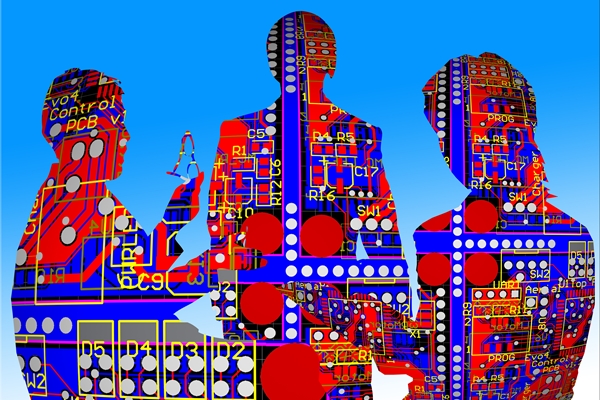11 August 2017. A computer science team developed a process that combines crowdsourcing and artificial intelligence to find analogies across disciplines to spark creative ideas. Researchers from Carnegie Mellon University in Pittsburgh and Hebrew University of Jerusalem describe the process in a paper delivered next week at the Conference on Knowledge Discovery and Data Mining, in Halifax, Nova Scotia, Canada.
The team led by Carnegie Mellon’s Aniket Kittur in the university’s Human-Computer Interaction Institute and Dafna Shahaf who studies computational analogies at Hebrew University is seeking better ways of finding creative ideas in large unstructured collections of innovation, such as inventions. Rather than looking for concrete solutions in these collections, however, the researchers are more interested generating new ideas, using analogies from one field to spark creative thinking in a different discipline.
The authors note that there’s no shortage of these idea collections. The U.S. Patent and Trademark Office, for example, has a database of more than 9 million patents, while Quirky, a company that helps inventors design and develop their product concepts as more than 307,000 inventions in its files. But techniques for mining these collections so far either look for close matches to specific structures or criteria, or simply analyze text in the databases, without looking into the methods or processes behind the inventions.
To find analogies, Kittur and Shahaf, with Hebrew University doctoral candidate Tom Hope and Carnegie Mellon postdoctoral researcher Joel Chan, built a simple model for representing the structure of an idea that describes its purpose, along with the mechanism for achieving that purpose. With that model, the team could analyze innovation databases to discover methods and techniques that can serve as analogies, and attach quantitative values to those analogies when applied to a different field.
For raw material, the researchers turned to the Quirky.com database of more than 307,000 inventions from 1.2 million members. The team then asked participants in Amazon Turk, a crowdsourced marketplace for what Amazon calls Human Intelligence Tasks, to review the inventions from Quirky and annotate “what the product does, what it is good for” (purpose) and “how it works, what are its components” (mechanism). With this method, the Amazon Turk contributors examined some 8,500 products, with 4 reviewers assigned to each product.
The team used this initial collection to train its systems, using an artificial intelligence technique known as neural networks, also known as deep learning, where algorithms are developed and refined from examples, and become more expert and confident as they experience more data. The examples provided in this case include the methods employed by inventors, making it possible to use these techniques to find analogies in diverse fields and enterprises.
To test their results, the researchers went back to Amazon Turk for participants to find pairs of analogous products in the Quirky database, with the team’s algorithms analyzing the same data. A rank-ordering of 2,500 analogy pairs shows the neural network analysis found more analogies than the human participants.
In another test of the system, Amazon Turk workers were asked to come up with ideas for redesigning an existing product, such as a cell phone charger case. Participants were given three sources of ideas for the redesign:
– Analogies in the Quirky database produced by the researchers’ algorithms
– Simple text searches of Quirky products
– Random examples of Quirky products
The team recruited 5 graduate students to review the 749 ideas generated by the participants, with 249 of those ideas considered “good,” of which 208 were comparable across all 3 conditions. Nearly half of the ideas produced by analogies (46%) were rated as “good,” compared to 37 percent for random suggestions and 30 percent from text searches.
“Once you can search for analogies, you can really crank up the speed of innovation,” says Shahaf in a Carnegie Mellon statement. “If you can accelerate the rate of innovation, that solves a lot of other problems downstream.”
More from Science & Enterprise:
- University, Company Employ AI for Anti-Aging Drugs
- FDA Clears Algorithm-Assisted Cancer Diagnosis
- Algorithm Quickly Customizes Walking Exoskeleton
- Computer Vision, Deep Learning Aid Prosthetic Hands
- Algorithms Simplify, Improve Robot Grasping
* * *


 RSS - Posts
RSS - Posts
[…] Creative Ideas Mined with Crowdsourcing, Neural Nets […]